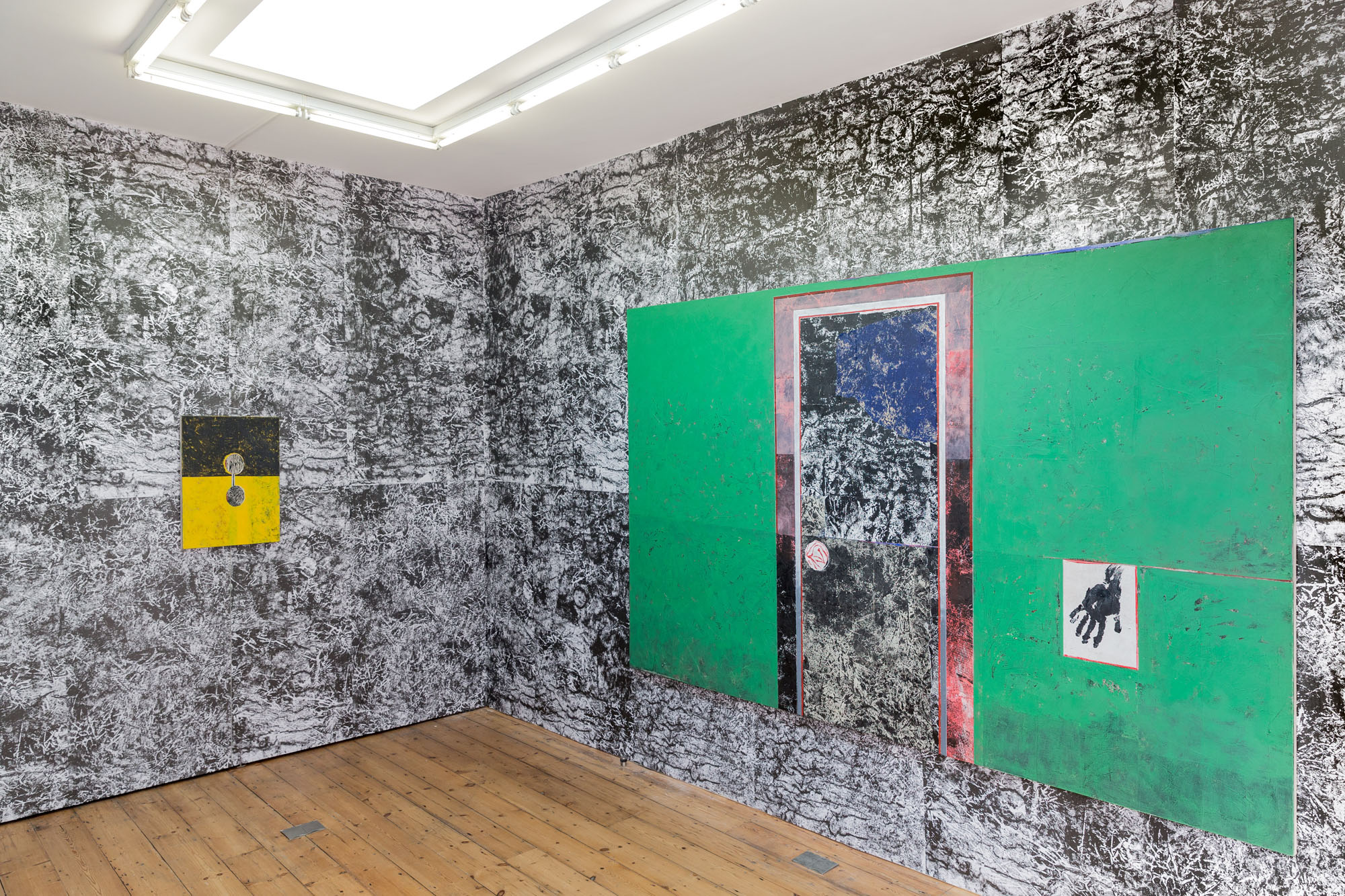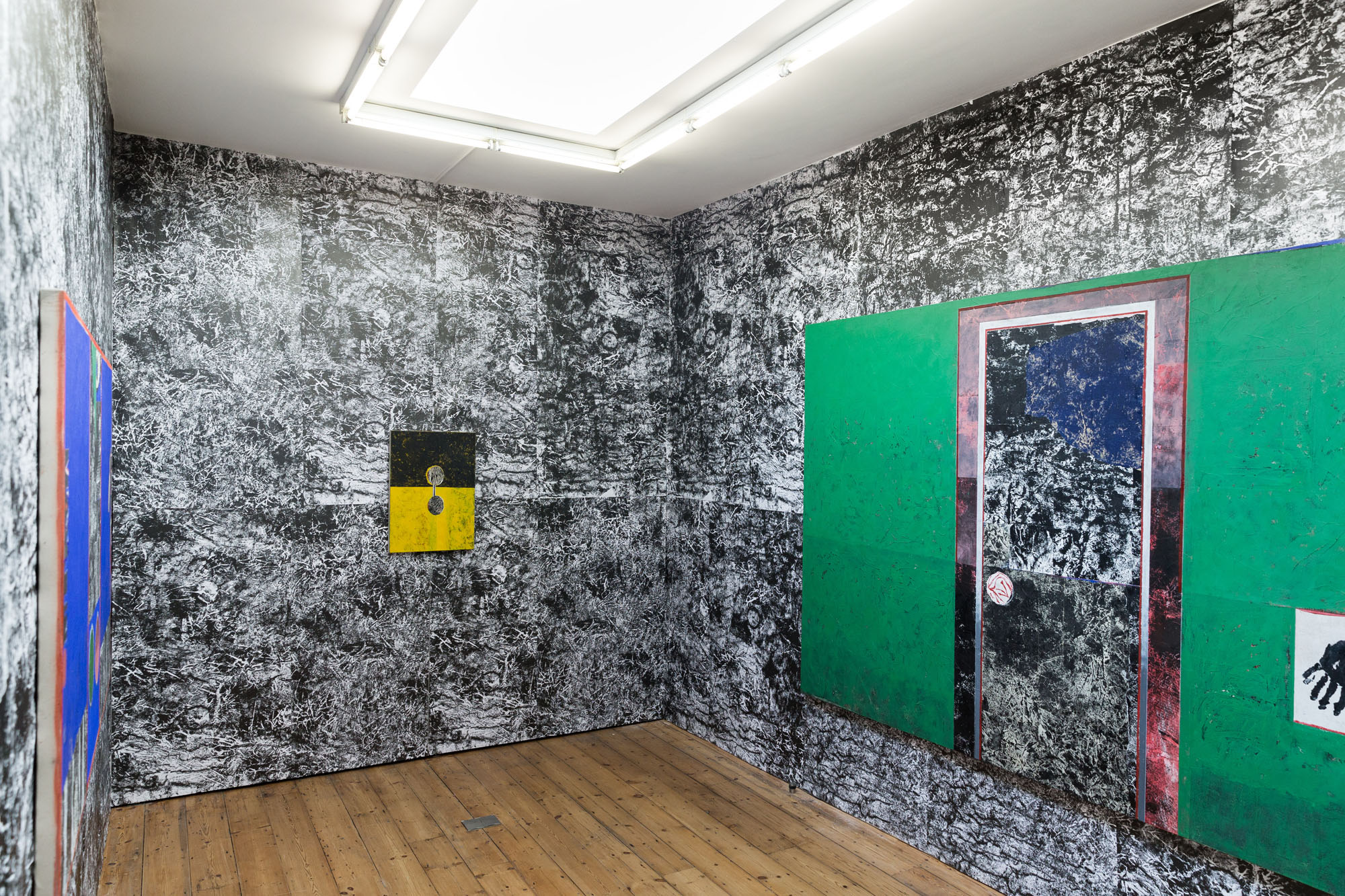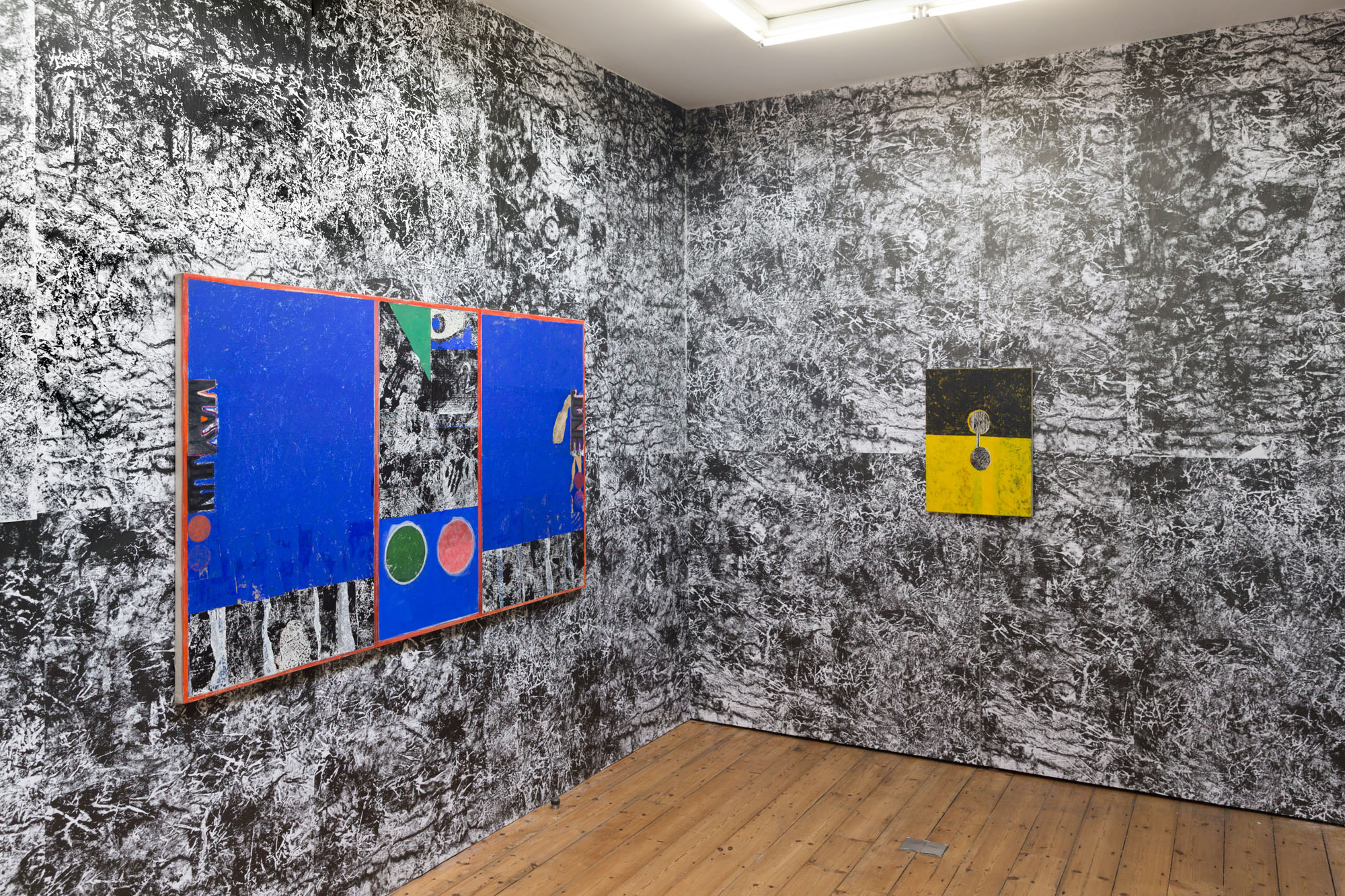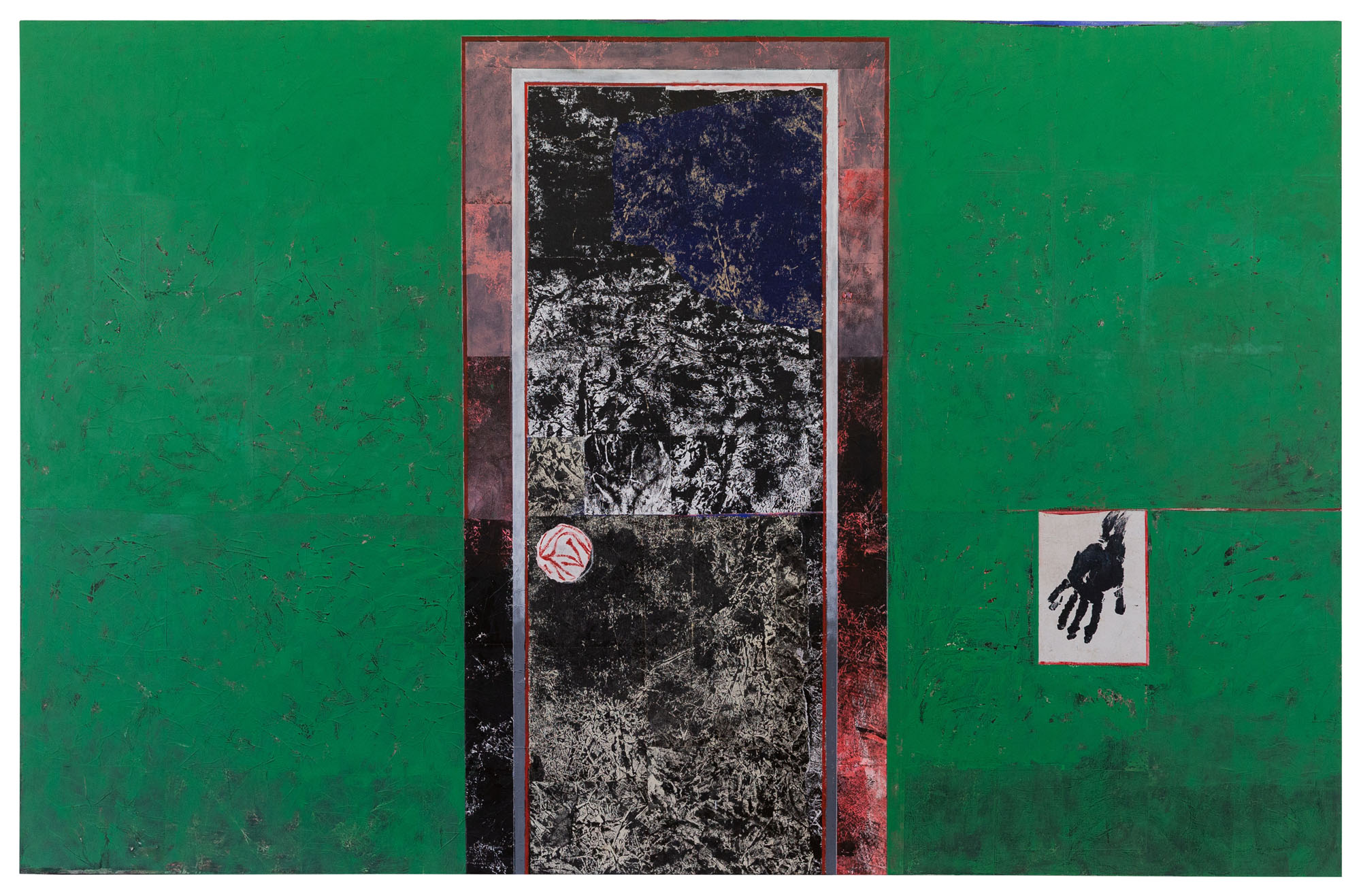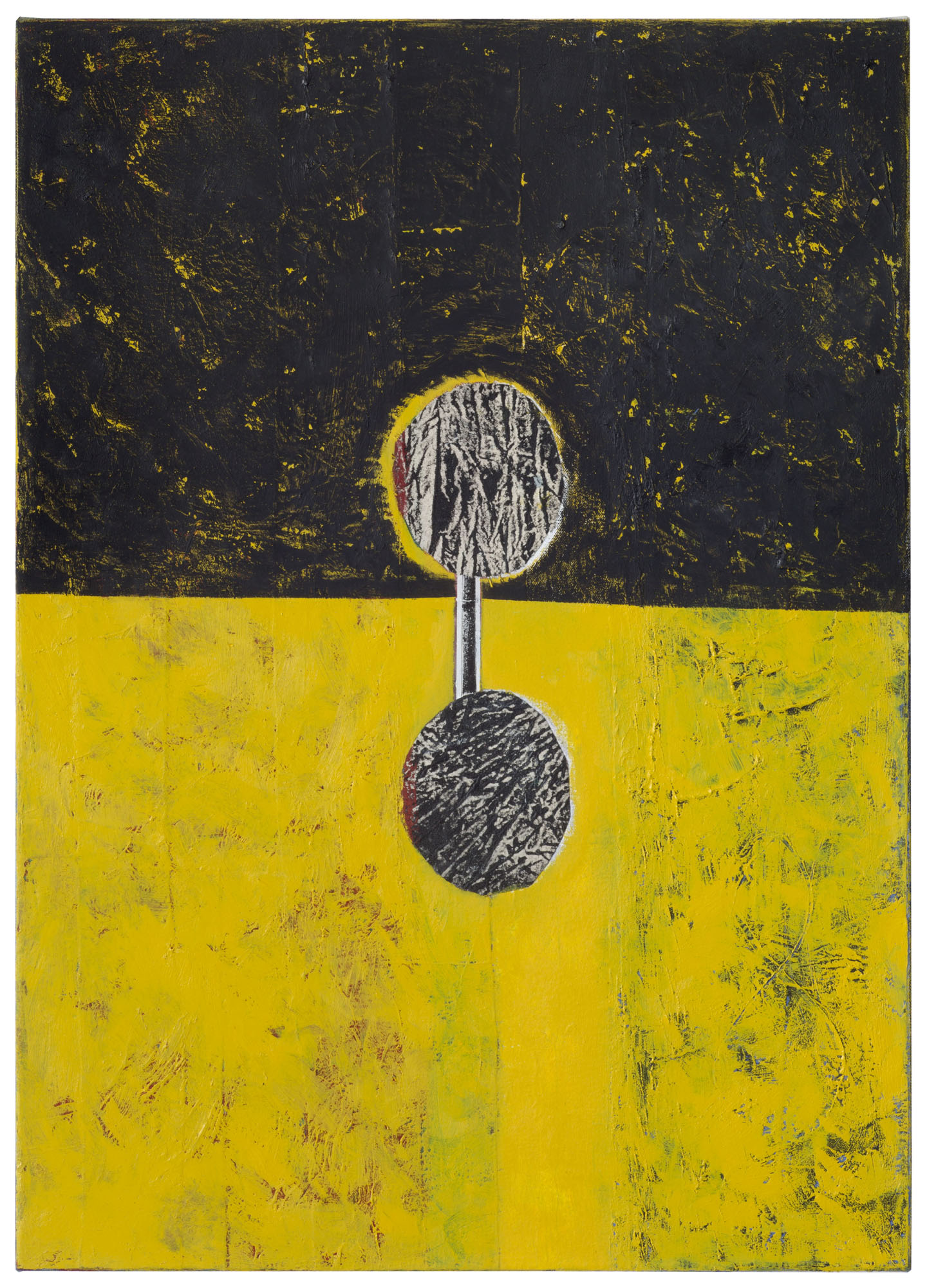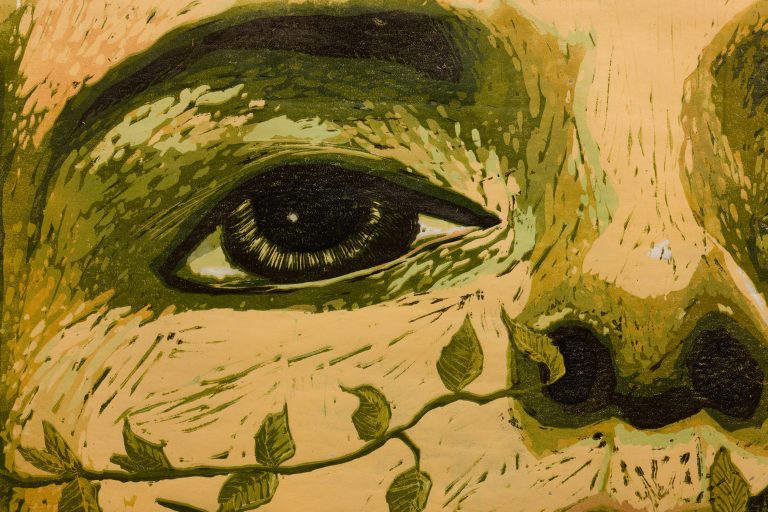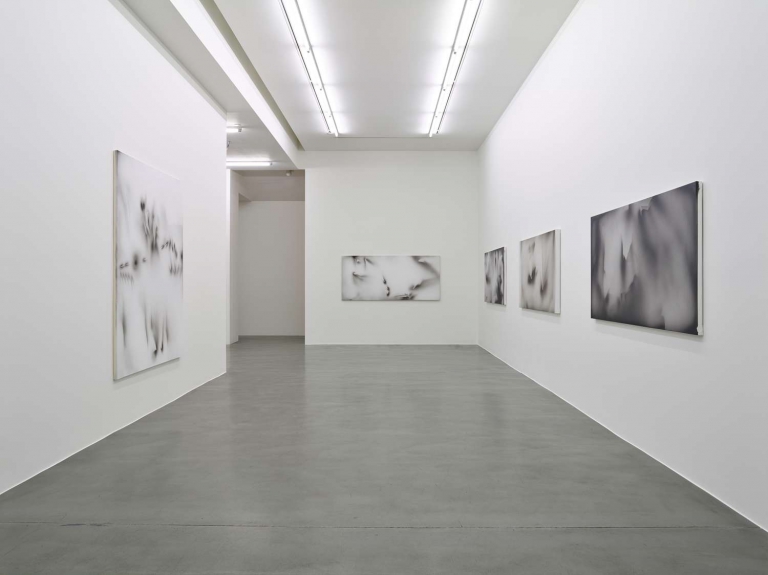Artist: Sam Windett
Exhibition title: Remodel
Venue: The Approach, London, UK
Date: March 19 – May 5, 2019
Photography: all images copyright and courtesy of the artist and The Approach, London
in conversation with Jo HarrisonFor Remodel, British artist Sam Windett will exhibit recent paintings in The Annexe produced through his distinctive process of layering paint and paper. Windett works through a system of continuously adding and subtracting materials, modelling and remodelling the canvas surface to create paintings caught somewhere between abstraction, narrative and representation.JH: The show is called Remodel, which you have previously alluded to as being informed by the process of covering and uncovering (perhaps somewhat inspired by Jasper Johns). Can you talk more about the relevance of this title and the way it relates to your practice?SW: The title came from the process by which the paintings are made, through the layering, adding and removing, of paint and paper. I always start with a rough idea of how each painting might look, drawing first in charcoal or pencil, but through the process of its making, the painting becomes remodelled from its initial idea to something far removed: a version 2.0. Conceptually, the title also reflects the revealing or concealing of an idea. When I’m making a show, I’m usually conflating two things, remodelling them so that they work together; something personal, alongside a cultural reference, a pop song or something I’ve read.You would definitely say the outcome was a ‘re-model’, not that you are making a completely new thing?No, because the germ of the original idea is always in there.
So, you might say there’s always the trace of one painting in another; they become palimpsestic, still bearing the mark or residue of an earlier or form?
Yes exactly, because I use collage, I’m always creating sheets of painted paper that variously find their way into each of my paintings. But what doesn’t get used becomes part of a library, to be reused later on. I really like this idea of something being used and reused. This has also inspired the wallpaper for this show.
Your last exhibition at The Approach perhaps marked a milestone in your practice, where you arrived at a new point, both in terms of style and concept. You were dealing with themes relating to motorway travel, time, repetition; conjuring meditative or reflexive moments in your paintings which in fact stemmed from deeply personal experiences. Recurring motifs kept appearing too, particularly the sphere which became a stand-in for the sun, moon, also car headlights. How much of this still remains as a guiding force informing the new works?
Yes, those themes still resonate strongly, though the work is slowly shifting a little bit, the sphere in particular, it’s such a useful motif, you can morph it into whatever you want. It can be a sun, a moon, an eye, or if there’s two of them, headlights, or taillights, either moving away or coming towards you. It’s hard to get away from that motif because it ties a painting together formally, but it also can be used it in different ways conceptually. That circle shape can just take the form of so many different creatures or ideas in terms of what it represents. In mythology, I guess you would call that a shapeshifter.
Additionally, some of those paintings from the show you refer to [Motorway IV], were split up into three segments, representing motorway lanes, and I’m still doing that to a certain extent, but that has shifted into me constructing doorways; two walls either side of an opening. This creates a distinction in depth perception; perhaps you are looking from the perspective of a building outside to a landscape; I like that idea of standing on the inside, looking out, or vice versa.
It felt like the last series of paintings were of you trying to make sense of a very specific memory or journey. You conjured a very sensory evocation of a motorway road at night-time, bright headlights being reflected in wet tarmac and the grey spray that shoots its way up the side of the vehicle. You described this memory as finding itself stuck on repeat in your head, like an earworm, that wouldn’t resolve itself until you’d exhausted it. Have you gotten closure on that experience now, wringing it out through your paintings?
The work now is definitely still connected to that memory, but I’ve moved on from there being such a personal focus. The framework still exists though, especially the themes relating to driving and headlights, the fronts of vehicles, ploughing forward indiscriminately and taking anything with it that comes into its flightpath. This makes me think of a podcast I was listening to the other day, relating to Jean Baudrillard’s theory of simulacra and simulation. The concept posits that we live in a Postmodern era experiencing our lives as a simulated version of reality, this reality being constituted from media imagery, which in itself is merely based on a representation of reality, not reality itself. Our self-expression too, emerges from these simulated realities; each of us living out our own individual identities according to a particular set of prescribed social codes as understood through the media. Anyway, Baudrillard likened this to a freeway: that we all exist as separate from one another, each sat in our individual cars, playing out our own simulated realities, alienated from one another without concern or awareness for our fellow neighbour and their version of reality, but nevertheless we are always still operating as part of a huge machine.
So according to Baudrillard, the way we experience reality is like a remodel too, another advanced version, version 2.0, like you mentioned before, a life experienced through many filters. And driving then becomes a metaphor representing the quiet yet relentless violence that powers this form of existence forward.
Yes, for sure. Slavoj Žižek talks about the way the world is held together through these continual acts of violence, which are active enough to drive the machine forward, but that take place through unconscious modes of participation. The violence becomes so abstracted, it becomes so distant from you, it’s easy enough to ignore it. Žižek is a pragmatist, he’s not saying we should or should not behave in particular ways, but he is saying that if you want the world to be like this, operating within an advanced capitalist society, then, for now, we have to accept the cost.
The calendar has been a significant motif in many of your recent paintings. It originally emerged because you were working on a series of paintings that were titled after aeroplane crashes, which included the name of the crash and the date of the event.
Those aeroplane crash paintings were grounded in something that really happened; some horrible event. That date had a very specific significance, which related to my own fascination in the morbid and fatalistic. But then later, as I continued to use the calendar, the dates didn’t feel so relevant or loaded, when they lost their intense connection to these macabre events, they then felt too arbitrary. I’m trying to find a way in newer works to use this same technique of the dates and numbers but through different means because I really enjoyed the symbolism and formalism of them. More recently, I have been titling my paintings according to the motorway theme, but also the title ‘Form Destroyer’ has been surfacing a lot. This comes from a description of the sun in a Philip K. Dick story, called ‘A Maze of Death’. One of the main characters describes the sun as a ‘form destroyer’ because over time, all forms of life, animal, vegetable, mineral, eventually get destroyed by the effects of the sun, through erosion, bleaching, whatever. So, the sun then just becomes a symbol for time itself. I suppose you could say time is ultimately the dominant theme or force that permeates throughout all of my work.
Sam Windett, Remodel, 2019, exhibition view, The Approach, London
Sam Windett, Remodel, 2019, exhibition view, The Approach, London
Sam Windett, International Harvester, 2018, acrylic, oil, charcoal and collage on canvas, 83 x 120 cm (32 5/8 x 47 1/8 in.)
Sam Windett, Untitled (Double Form Destroyer) , 2018, Oil and collage on calico, 61 x 43 cm (24 x 16 7/8 in.)
Sam Windett, Remodel, 2019, exhibition view, The Approach, London
Sam Windett, Remodel, 2019, exhibition view, The Approach, London
Sam Windett, Hand / Ball , 2019, Collage, acrylic, oil paint and charcoal on canvas, 172 x 270 cm (67 5/8 x 106 1/4 in.)
Sam Windett, Remodel, 2019, exhibition view, The Approach, London
Sam Windett, Remodel, 2019, exhibition view, The Approach, London
Sam Windett, Remodel, 2019, exhibition view, The Approach, London
Sam Windett, Untitled (May June June) , 2018, acrylic, oil, charcoal and collage on canvas, 109 x 185 cm (42 7/8 x 72 3/4 in.)
Sam Windett, Remodel, 2019, exhibition view, The Approach, London
Sam Windett, Remodel, 2019, exhibition view, The Approach, London
Sam Windett, Remodel, 2019, exhibition view, The Approach, London
Sam Windett, International Harvester, 2018, acrylic, oil, charcoal and collage on canvas, 83 x 120 cm (32 5/8 x 47 1/8 in.)
Sam Windett, Remodel, 2019, exhibition view, The Approach, London
Sam Windett, Hand / Ball , 2019, Collage, acrylic, oil paint and charcoal on canvas, 172 x 270 cm (67 5/8 x 106 1/4 in.)
Sam Windett, Hand / Ball , 2019, Collage, acrylic, oil paint and charcoal on canvas, 172 x 270 cm (67 5/8 x 106 1/4 in.)
Sam Windett, Hand / Ball , 2019, Collage, acrylic, oil paint and charcoal on canvas, 172 x 270 cm (67 5/8 x 106 1/4 in.)
Sam Windett, Hand / Ball , 2019, Collage, acrylic, oil paint and charcoal on canvas, 172 x 270 cm (67 5/8 x 106 1/4 in.)
Sam Windett, Untitled (May June June) , 2018, acrylic, oil, charcoal and collage on canvas, 109 x 185 cm (42 7/8 x 72 3/4 in.)
Sam Windett, International Harvester, 2018, acrylic, oil, charcoal and collage on canvas, 83 x 120 cm (32 5/8 x 47 1/8 in.)
Sam Windett, Untitled (Double Form Destroyer) , 2018, Oil and collage on calico, 61 x 43 cm (24 x 16 7/8 in.)






